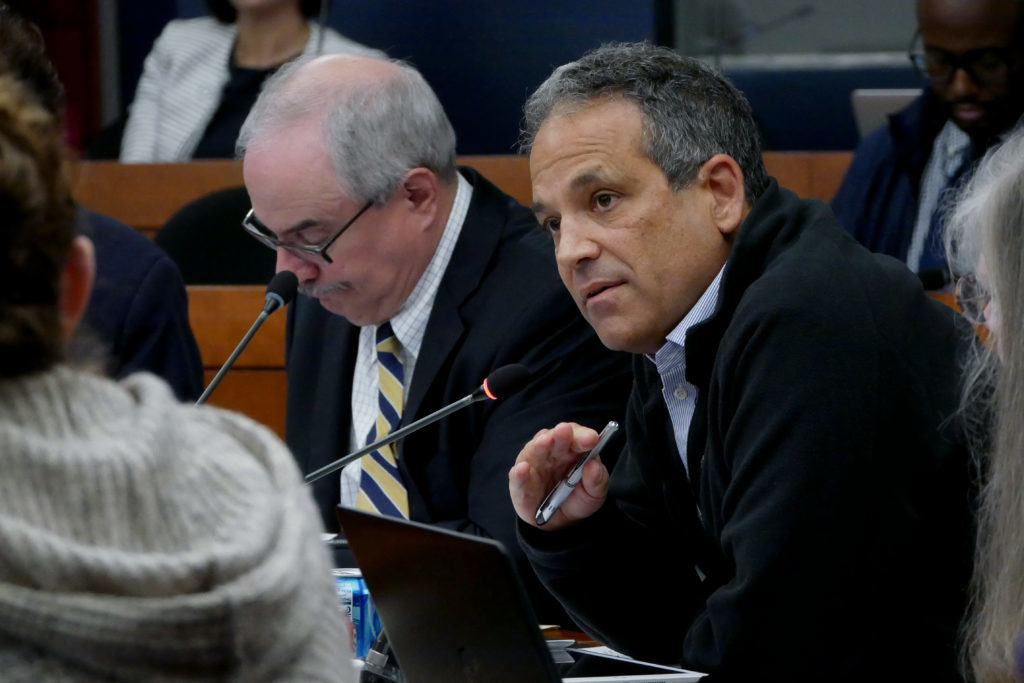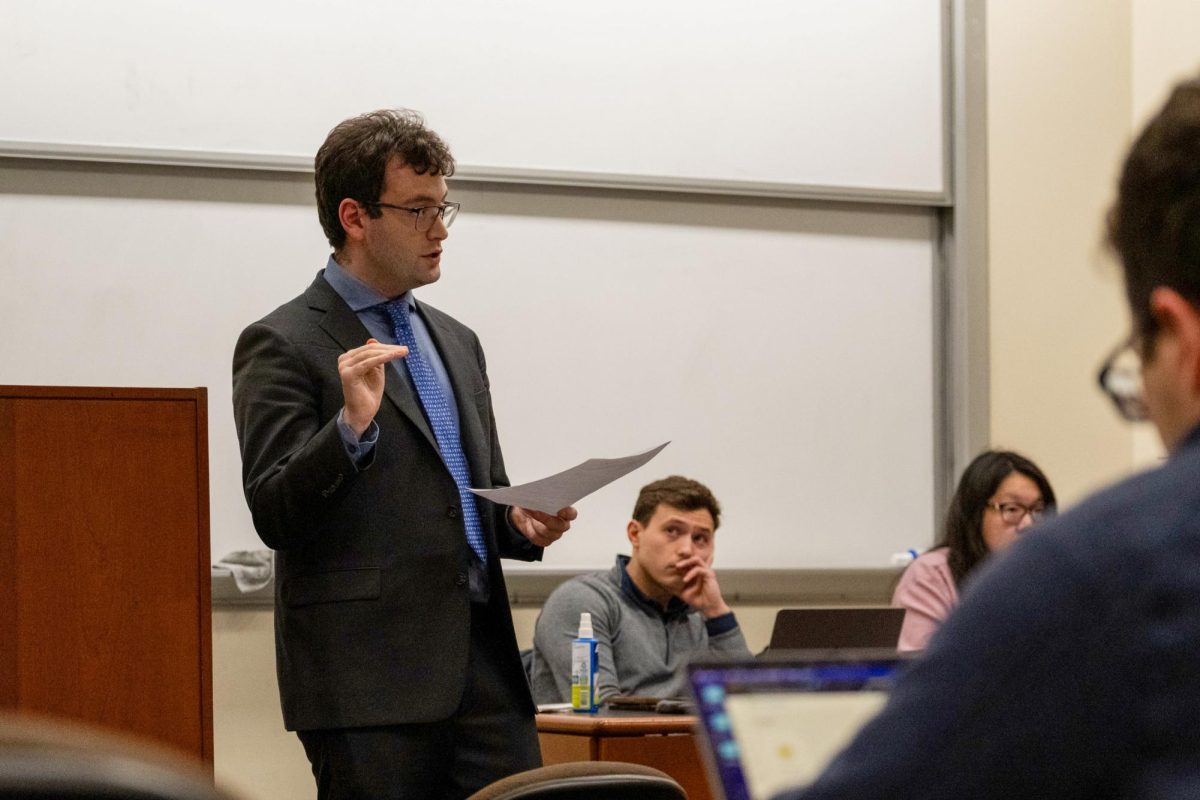While graduates are earning higher median salaries than last year, the University ranked lower than more than half of its peer schools in graduating low-income students.
The University ranked high among its peer institutions for internship and co-ops but ranked in the bottom half of its peers for social mobility – two new categories included in the 2020 Best Colleges Rankings from U.S. News and World Report. Higher education experts said that while widespread participation in internships can make graduates more desirable to employers, an increased median starting salary is part of a broader economic trend.
The University fell seven spots to No. 70 in the most recent rankings, the lowest of all its peer schools. This year is the second in which the University dropped seven places in the ranking, leaving GW at its lowest spot in more than a decade.
Ed Gillis, the interim vice provost for enrollment and student success, said in a University release earlier this month that there are “many ways” to measure GW’s strengths and challenges beyond rankings. The overall rankings are determined by examining 15 metrics, including graduation rate, financial aid and standardized test scores of admits.
“It is important to remember that rankings are just one of many ways for students and families to determine what institution is the best fit for them,” Gillis said in the release.
Median salary increase
The median starting salary for recent graduates hit $56,500, an increase of about 4.3 percent from last year. The figure is about $6,500 more than the average starting salary for 2018 graduates, according to a report published last year by the National Association of Colleges and Employers.
Tom Brinkley, the executive director of the Student Professional Development Center at Elon University, said the fact that there are more entry-level jobs than there are qualified students interested in working those jobs forces companies to increase the wages they offer.
“There’s a high demand on entry-level college talent, so companies are having to pay more to get more, and a lot of jobs are going unfilled right now,” he said. “A student who tells you they can’t find a job today is either not looking or not looking correctly because there are jobs out there for students.”
Brinkley said administrators can improve their professional development programs by reaching out to faculty and staff for potential job opportunities, increasing the career center’s engagement with students and improving the internship opportunities available to students.
“If you do the things you’re supposed to do, then rankings will come,” he said. “That’s a result of just doing good work. If a school tries to get a ranking just for the sake of a ranking, then that’s the wrong path.”
Internships and co-ops
The report places GW at No. 16 for the best cooperative education and internship programs based on how much universities “encourage students to apply what they’re learning in the classroom out in the real world.”
The ranking was based entirely on a peer assessment survey distributed to college presidents, provosts and admissions deans, according to the report’s website. Each participant was asked to nominate up to 15 schools in the category.
GW ranked second among its peer schools in the category. Northeastern University, which ranked No. 1 overall, was the only peer school to top GW in the category.
University President Thomas LeBlanc cautioned students last year about internship culture, citing the number of freshmen who prioritize internships and forgo existing opportunities at the University, like research.
Neil Burton, the executive director of the Center for Career and Professional Development at Clemson University, said a high ranking for internships could indicate to employers that graduates leave GW with solid work exposure.
“Universities that have a pretty high ranking, employers would be seeking out their graduates at a pretty high level because those graduates are coming out with those professional experiences,” Burton said.
Low social mobility
U.S. News and World Report’s social mobility ranking, a new category in this year’s list, measures how well colleges graduate low-income students by examining the difference in graduation rates for Pell Grant recipients and non-Pell recipients.
GW clocked in at No. 322 nationally, placing at ninth among its 12 peer institutions. GW ranked ahead of the University of Pittsburgh at No. 335, Wake Forest University at No. 360 and Tulane University at No. 365.
Provost Forrest Maltzman said the rankings used data from the 2012 Pell Grant program, adding that GW’s first-time and overall Pell rate increased by 3 percentage points to 15 percent by fall of 2018.
He added that administrators have taken measures to enroll more economically diverse classes in the years since. Officials have set out on recruitment trips to target students from historically marginalized communities. The undergraduate student population was the most diverse in recent memory last academic year.
“Although I have concerns with some of the factors that U.S. News takes into account as part of their ranking, educating and graduating students who are eligible to receive a Pell Grant is a good proxy of the extent that an institution is a vehicle for social mobility,” Maltzman said in an email.
Maltzman said the University is working to improve its social mobility rank by making changes to the financial office, like working with students to submit paperwork efficiently to reduce the number of audits. Students were assigned a financial aid adviser after officials overhauled the office earlier this year.
“While we have made progress and GW is an economically more diverse institution today than it once was, the ranking within the U.S. News social mobility category highlights that there is more we can do,” he said.
Cliff Brown, an associate professor of sociology at the University of New Hampshire, said social mobility indicates officials’ ability to help students unlock talents “regardless of their background.”
He said universities that want to rank high on social mobility should enroll higher proportions of students from economically disadvantaged backgrounds and ensure the success of those students in terms of grades, graduation rates and job placement upon graduation.
“To improve social mobility, universities need to reach out to students who might otherwise not be able to attend college,” Brown said in an email. “Financial obstacles that poorer families face can be addressed through grants, scholarships or low-interest loans.”
About 70 percent of GW students come from families in the top 20 percent of median family income, according to a New York Times report from 2017. The median family income of a GW student is about $182,200.
The University’s six-year graduation rate for Pell recipients was 78 percent, compared to 83 percent for the entire student body. Brown said administrators should provide Pell recipients with additional resources to help them succeed because students receiving these grants often hold jobs while studying, increasing their workload.
“These students may be under greater pressure to work while in college or may struggle to buy their books each semester,” he said. “However, students who use Pell Grants may also be less well prepared to succeed in college given the possibility that their prior schooling was not as strong as the educational opportunities available to middle and upper-class families who did not receive Pell Grants.”





